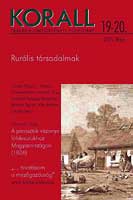Társadalmi és gazdasági hierarchia a dikális adórendszerben Moson vármegye adókulcs-tervezete (1838)
Social and economic hierarchy in the dical tax system based on the tax rate plan of Moson County (1838)
Author(s): Gergely Krisztián HorváthSubject(s): History
Published by: KORALL Társadalomtörténeti Egyesület
Keywords: Hungary; social history;19th century; late feudal taxation system; county Moson; taxreform; social hierarchy and stratification
Summary/Abstract: Prior to 1848 Hungary’s system of taxation was of a portialis character, rooted in the Middle Ages. Tax was levied as a lump sum by the Diet and was distributed among the Counties according to the number of their homesteads (portas). Rather than establishing tax on the basis of income and industry, this system taxed the assets on the basis of the so called dicas. Each taxable asset had its value in dicas (Lat. “dica” = notch). The amount of the tax imposed on the county was dicided by the number of registered dicas, this yielded the amount of tax payable for a single dice. The correlation between the amounts of the various assets and the dice value was established by the counties themselves. The paper review the operation and dysfunctions of the feudal system of taxation and the contemporary criticism directed against it, then moves on the analyzing the 1838 Assembly debate of Moson County in the North-Western extreme of Hungary and depicts the various standpoints taken in the issue of the establishment of the tax rate unit. Moson was one of the counties of Hungary with the most advanced market development during the first part of the 19th century. The purpose of the study is to use the debates about the tax rate to demonstrate that the feudal county strove to ease the central burdens on its subjects and to allocate more weight to taxing industry in the areas where the market had developed (e.g. carriage, leases).
Journal: Korall - Társadalomtörténeti folyóirat
- Issue Year: 2005
- Issue No: 19-20
- Page Range: 160-189
- Page Count: 30
- Language: Hungarian

